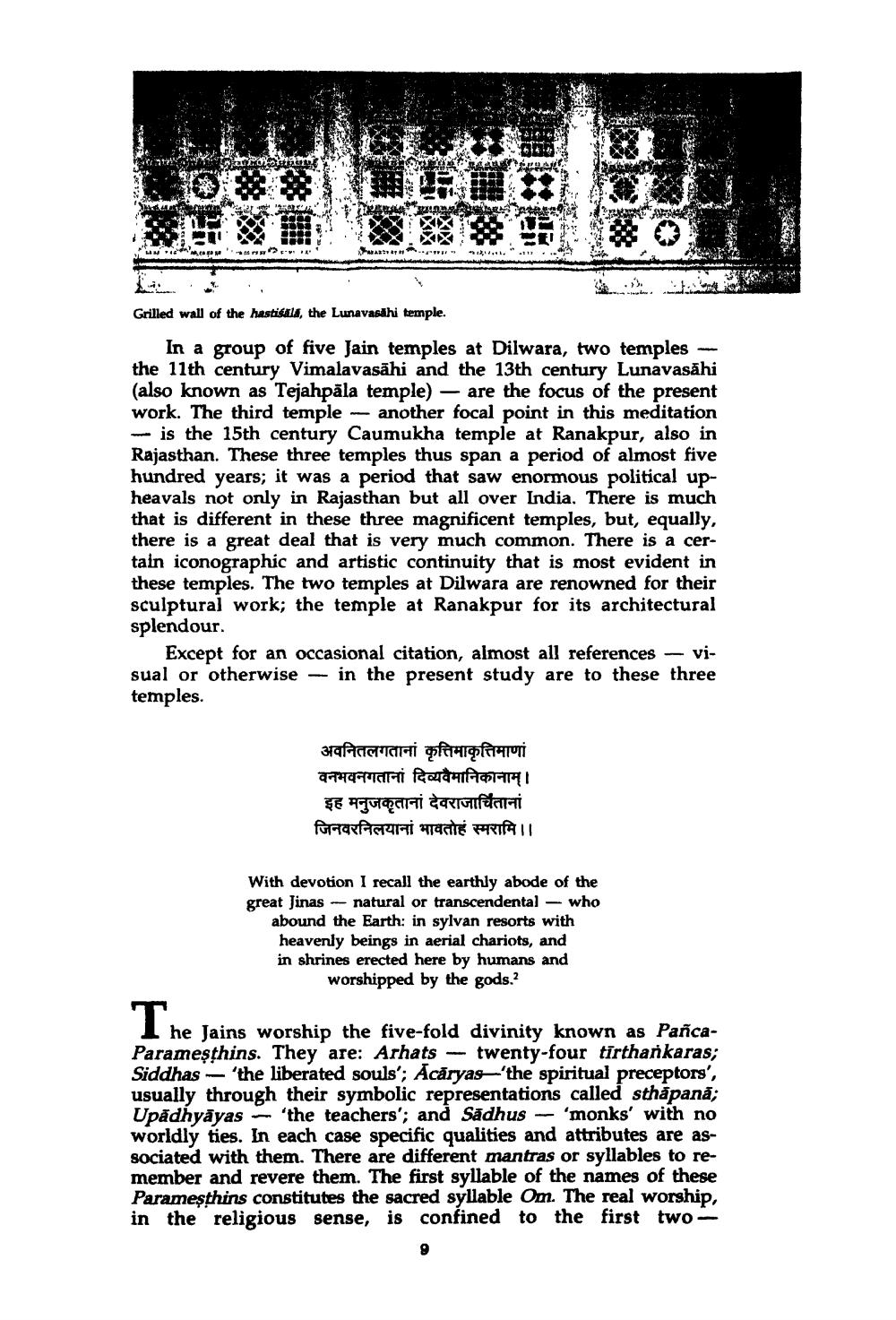________________
O
Grilled wall of the hastisala, the Lunavasahi temple.
In a group of five Jain temples at Dilwara, two temples the 11th century Vimalavasāhi and the 13th century Lunavasāhi (also known as Tejahpāla temple) - are the focus of the present work. The third temple - another focal point in this meditation - is the 15th century Caumukha temple at Ranakpur, also in Rajasthan. These three temples thus span a period of almost five hundred years; it was a period that saw enormous political upheavals not only in Rajasthan but all over India. There is much that is different in these three magnificent temples, but, equally, there is a great deal that is very much common. There is a certain iconographic and artistic continuity that is most evident in these temples. The two temples at Dilwara are renowned for their sculptural work; the temple at Ranakpur for its architectural splendour.
Except for an occasional citation, almost all references - visual or otherwise in the present study are to these three temples.
अवनितलगतानां कृत्तिमाकृत्तिमाणां वनभवनगतानां दिव्यवैमानिकानाम् । इह मनुजकृतानां देवराजार्चितानां जिनवरनिलयानां भावतोहं स्मरामि ।।
With devotion I recall the earthly abode of the great Jinas natural or transcendental - who
abound the Earth: in sylvan resorts with heavenly beings in aerial chariots, and in shrines erected here by humans and worshipped by the gods.2
The Jains worship the five-fold divinity known as Pañca
-
Parameṣṭhins. They are: Arhats twenty-four tirthankaras; Siddhas 'the liberated souls'; Acaryas 'the spiritual preceptors', usually through their symbolic representations called sthāpanā; Upadhyāyas 'the teachers'; and Sadhus 'monks' with no worldly ties. In each case specific qualities and attributes are associated with them. There are different mantras or syllables to remember and revere them. The first syllable of the names of these Parameşthins constitutes the sacred syllable Om. The real worship, in the religious sense, is confined to the first two
9




